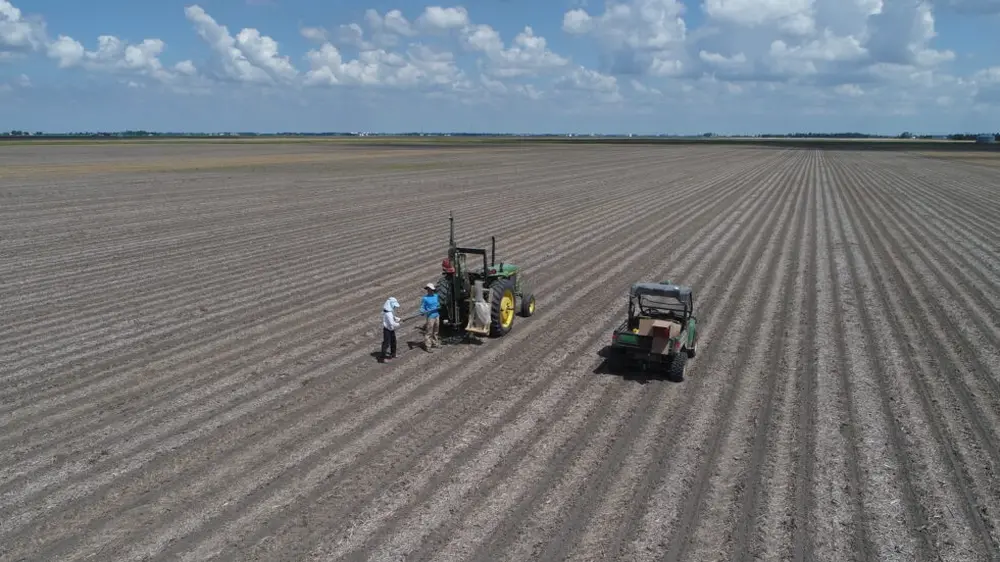
Quantifying the amount of SOC in agricultural fields is therefore essential for monitoring the carbon cycle and developing sustainable management practices that minimize carbon emissions and sequester carbon from the atmosphere to the soil to reduce or reverse the climate effects of agriculture.
“Accurate and efficient SOC estimation is essential,” said Eric Potash, a Research Scientist in the Agroecosystem Sustainability Center (ASC) and Department of Natural Resource & Environmental Sciences (NRES) at the University of Illinois Urbana-Champaign. “Governments need to estimate SOC in order to implement policies to minimize climate change. Researchers need to estimate SOC to develop sustainable management practices. And farmers need to estimate SOC to participate in emerging carbon credit markets.”
The traditional and most reliable way to quantify SOC is by soil sampling, with analyses in the lab (“wet chemical” measurement). But which locations in the field should be sampled? And how many samples should be taken for an accurate estimate? Each additional soil core adds significant labor and expense — and uncertainties in how to optimize sampling can lead to substantial extra costs.
In a new publication from the U.S. Department of Energy’s (DOE) SMARTFARM Project, Potash and other SMARTFARM researchers evaluated strategies for estimating SOC. Their goal was to develop an estimation strategy that maximizes accuracy while minimizing the number of soil cores sampled.
The SMARTFARM Project, a program led by co-author and Blue Waters Professor in NRES Kaiyu Guan and funded by the DOE’s Advanced Research Projects Agency-Energy (ARPA-E), endeavors to develop a precise solution for measuring and quantifying greenhouse gas emissions and SOC change during the production of crops.
“We aim to collect gold-standard ground truth data and also to develop new technology to quantify field-level carbon outcomes for bioenergy crops, improving yield and also improving environmental sustainability,” said Guan, ASC Founding Director.